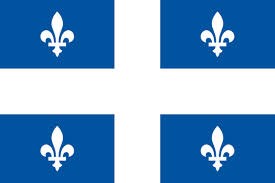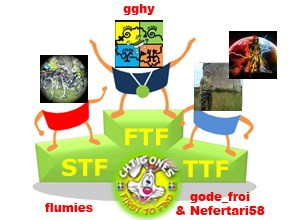#5 - Voie VERTe du vieux canal de Briare Traditional Cache
#5 - Voie VERTe du vieux canal de Briare
-
Difficulty:
-

-
Terrain:
-

Size:  (micro)
(micro)
Please note Use of geocaching.com services is subject to the terms and conditions
in our disclaimer.
[FR] Le canal de Briare est un des plus anciens canaux de France. Avec les 54 km de son parcours et ses 38 écluses, il permettait à la navigation de relier la Loire et la Seine. Sur 3,5 km, longez le à vélo ou à pieds.
[EN] The Canal de Briare is one the oldest canals of France. With its 54 km and its 38 locks, it allowed the navigation to connect the Loire and the Seine. On 3,5 km, follow it by bicycle or to feet.
Avant toute chose, je voudrais remercier Narquois et Géotrouveuse qui ont fait figure, avec Le Canard du Canal, de pionniers du géocaching sur le secteur.
Ils avaient initié cette série en 2006 sous le nom "Briare - Vieux canal".

La maintenance étant devenue difficile depuis la Belle Province, ils m'ont spontanement proposé de prendre leur suite.
J'en ai profité pour compléter la série, pour faire revivre quelques caches archivées et vous proposer une bonus pour récompenser ceux qui auront fait l'ensemble des caches. Je vous souhaite de prendre beaucoup de plaisir dans cette promenade à pieds ou à vélo.
--------------------oOo--------------------

--------------------oOo--------------------
[FR]
La loire à vélo
Sur les rives du dernier fleuve sauvage d'Europe, au coeur de la somptueuse vallée des Rois, de Nevers à l’Atlantique, le tracé de "La Loire à vélo" vous invite à un voyage unique de châteaux en jardins, d'îles en vignobles, à la rencontre des gens du fleuve. La vallée de la Loire a inspiré les écrivains par sa beauté naturelle, elle a attiré les souverains qui l'ont dotée d'un remarquable patrimoine architectural. Sa douceur climatique et son terroir ont donné les célèbres vins de Loire. Elle est inscrite au Patrimoine mondial de l'Unesco.
Cette petite portion d’environ 3,5 km vous conduit entre Briare et Châtillon-sur-Loire, le long d’un des plus vieux canaux de France et à l’abri de toute circulation motorisée.
Le canal de Briare dit "vieux canal"
Le canal de Briare est un des plus anciens canaux de France.
Avec les 54 km de son parcours et ses 38 écluses, il relie le canal du Loing au Canal Latéral à la Loire. Il permettait à la navigation de relier la Loire et la Seine. C'est le prototype de tous les canaux modernes.
Il fut commandé par Sully afin de développer le commerce entre provinces, réduire les disettes, et par là ramener la paix dans le royaume. Sa construction commença en juin 1605 et ne fut achevée qu'en 1642. Entre six et douze mille ouvriers travaillèrent sur ce chantier.
Ce canal assure la jonction de deux bassins différents (Loire et Seine). Il fallut construire des écluses, mais aussi un bief sur la ligne de partage des eaux, par où se ferait l'alimentation principale du canal, en collectant l'eau d'étangs situés plus haut.
Un canal à bief de partage est comparable à une route qui franchit un col, à cette différence que la route n'a pas besoin d'être alimentée en eau. En effet, à chaque passage de bateau, il faut réalimenter les écluses d'environ 500 à 1 000 mètres cubes d'eau selon la hauteur des ouvrages. Des étangs furent donc creusés ou agrandis et reliés au bief par tout un réseau de plusieurs dizaines de kilomètres de rigoles à travers bois et champs.
Pour accroître la capacité de cette alimentation suite au passage du canal à un gabarit supérieur, une usine élévatoire (cache GC2GWCQ) fut installée à Briare en 1895 pour refouler l'eau de la Loire 45 m plus haut, dans le bief de partage tout près de l'écluse de la Gazonne.
Au cours des années 1830, le canal connut une importante campagne de modernisation, parallèlement à la construction du Canal latéral à la Loire.
Le canal fut racheté par l'État en 1860.
Pour améliorer la fluidité du trafic, un pont-canal en acier fut ouvert à Briare en 1896 pour permettre au canal latéral à la Loire (réalisé entre 1822 et 1838), de traverser la Loire bien plus facilement qu'auparavant, où il devait emprunter le lit du fleuve sur 1 km à Châtillon-sur-Loire (Ecluses de Mantelot, cache GC4CEF9). Ce pont-canal permit ainsi une connexion plus facile du canal latéral avec le canal de Briare. Le pont-canal de Briare appartient au canal latéral à la Loire (et non au canal de Briare).
Pensez à relever l'indice collé dans la boîte pour la bonus !
Un crayon a été placé dans chaque boîte au départ mais ce type d'outil a une fâcheuse propention à disparaître donc prévoyez de quoi écrire ...
Pourquoi "VERT" ?
Ma première cache posée (GC3VHY2) était une boîte verte, avec un stylo vert, un log book vert et des objets d'échange verts. Ainsi est née l'idée de placer les caches qui ont suivi sous le signe du "VERT" et de proposer un défi consistant à y déposer de préférence des objets "VERTs". Ce défi ne peut malheureusement pas concerner les caches de taille nano ou micro.
[EN]
The Loire by bike (La Loire à vélo)
On the banks of the last wild river of Europe, at the heart of the luxurious Valley of the Kings, from Nevers to the Atlantic Ocean, the plan of " La Loire à vélo " invites you in a unique journey from castles to gardens, from islands to vineyards, on the meeting of people of the river. The Loire valley inspired the writers by its natural beauty, it attracted the sovereigns who endowed it with a remarkable architectural heritage. Its climatic sweetness and its country gave famous wines of the Loire. It is registered on the UNESCO world heritage.
This small portion about 3,5 km leads(drives) you between Briare and Châtillon-sur-Loire, along one of the oldest channels(canals) of France and shielded from any motorized traffic(circulation).
The Briare canal called " old canal " (vieux canal)
The Briare canal is one of the oldest canals in France.
With its 54 km its 38 locks, it connects the canal of Loing with the "Canal latéral à la Loire". It allowed the navigation to connect the Loire and the Seine. It is the prototype of all the modern canals.
It was ordered by Sully to develop the trades between provinces, reduce the scarcities, and there return the peace in the kingdom. Its construction began in June, 1605 and was finished only in 1642. Between six and twelve thousand labor worked on this construction site.
This canal ensures the junction of two different ponds (the Loire and the Seine). It was necessary to build locks, but also reach on the watershed, by where would be made the main supply of the canal, by collecting the water of ponds placed higher.
It is comparable to a road which crosses a pass, with this difference that the road does not need to be fed with water. Indeed, in every passage of boat, it is necessary to re-feed locks about 500 in 1 000 cubic meters of water according to the height of the works. Ponds were thus accentuated or enlarged and connected with the reach by a network of dozens of kilometers of canals through the woods and fields.
To increase the capacity of this supply further to the increasing of the size of the canal, an elevating factory (cache GC2GWCQ) was settled in Briare in 1895 to repulse the water of the Loire 45 m higher, in the reach of sharing very close to the lock of Gazonne.
During 1830s, the canal knew an important campaign of modernization, in the same time as the construction of the "Canal latéral à la Loire".
The canal was acquired by the State in 1860.
To improve the fluidity of the traffic, a steel canal bridge was opened to Briare in 1896 to allow the "Canal latéral à la Loire" (realized between 1822 and 1838), to cross the Loire more easily than previously, when it had to borrow the bed of the river on 1 km in Châtillon-sur-Loire (Locks of Mantelot, cache GC4CEF9). This canal bridge so allowed an easier connection of the Canal latéral à la Loire with the canal de Briare.
Note the indication sticked in the box for the bonus !
A pencil was placed in every box at first but this type of tool has an annoying propensity to disappear thus bring your own pen ...
Why "VERT" ?
My first geocache (GC3VHY2) was a green box, with a green pen, a green log book and green items for exchange. So was born the idea to place the caches which followed under the sign of the "VERT" ("GREEN" in French) and to propose a game consisting in depositing there rather "VERT" objects. This game cannot unfortunately concern the caches in nano or micro size.
Additional Hints
(Decrypt)
[FR] Urkntbar / [EN] Urkntba